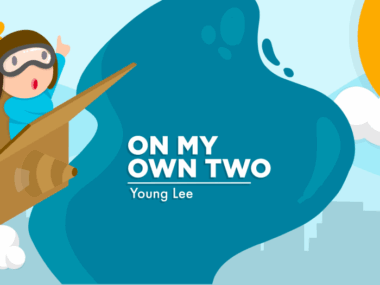When It Comes to Shoes, I’m Putting Accessibility Before Fashion
Written by |

In Asian culture, it’s important to take your shoes off before entering a house. It’s a sign of respect. When visiting friends for dinner parties or any kind of gathering, you can almost always find a corner near the doorway where shoes congregate.
And truthfully, although I’ve always appreciated this custom, it’s a bit of a burden. I was never good at tying or untying my shoes. I mean, I can get it done. It just takes my “Charcot-Marie-Tooth hands” an embarrassingly long time to do it.
Thus, I have a go-to strategy for leaving get-togethers (at least I did back when they were a thing): I quickly grab my shoes left at the entrance and awkwardly make my exit, feet shoved halfway into my shoes. I shuffle my way back to the car, where I can take my time adjusting and securing my feet in private.
A few weeks ago, I took a step toward making that aspect of my life a bit easier. I decided to equip one of my pairs of sneakers with an assistive device that my father, a fellow CMTer, gave me.
The entire installation process took a little more than half an hour. I’m sure someone with more able hands wouldn’t take nearly as long. But the experience allowed me time to reflect on feelings I have about style and accessibility, feelings I still haven’t fully sorted out.
My thoughts took me back to a pair of sneakers I had during my preteen years. They were black with a few white accents — my favorite color scheme. I only vaguely remember picking them up with my mother at the local department store, but I know why they were so well worn by the time I entered high school.
It wasn’t just because of the color scheme. It was because, apart from the shoelaces, which I found troublesome, the sneakers had an additional system for securing my feet: prominent Velcro straps. In fact, the Velcro straps were so effective that I all but abandoned the shoelaces in favor of simply securing my feet by pulling the Velcro straps taut.
I really loved those shoes with the Velcro straps, and I wore them almost every day. However, although folks never explicitly made fun of me for them, I knew those sneakers certainly weren’t what the popular kids were sporting. And I got a bit self-conscious if I ever caught classmates glancing at them.
I was more self-conscious about my shoes than my ankle-foot orthoses. After all, in the early 2000s, at least in the middle school scene, I don’t think it was very popular to cast doubt on your ability to tie your own shoelaces.
Yet, I don’t know that I’m necessarily less self-conscious today. After I upgraded my current pair of shoes with my new, easy “shoelace fastener,” I gave my shoes a quick once-over, wondering.
They don’t look bad, but they are certainly unconventional. The laces don’t quite match the rest of the shoe. Because of the stiffness of the material, the laces also stand awkwardly erect from the body of the shoe. And of course, instead of a bow knot completing the look, I have the plastic fastening device.
But fashion is fluid. At least that’s what I’ve concluded over the years. And it’s something I try to keep in mind. I think back to when I first saw the Nike Air Yeezy 1s in the late 2000s, a highly sought-after shoe designed by Kanye West, a popular rapper and music producer from Chicago. I was sitting in my college dorm room scrolling through streetwear fashion blogs on my laptop.
Reading about shoe collectors lining up for hours and hours to buy them perplexed me at the time, because a prominent feature of these high-end sneakers was a thick Velcro strap, similar to those on the pairs of shoes I felt slightly embarrassed of back in middle school.
The narrative I had internalized for so long was that Velcro straps — despite my love for them — are unstylish and a bit comical, something folks grow out of on the way to becoming an adult. And yet, here was a popular rapper making a shoe featuring Velcro straps desirable and coveted. The Velcro straps weren’t a disqualifying factor; they didn’t make the shoe any less valued in the fashion world.
Perhaps there’s a takeaway here: We shouldn’t get too bogged down with following trends and worrying about what others think, because trends come and go. If I like things that are a bit more accessible and easy for me, I shouldn’t feel bad about that. Also, I need to constantly check and recheck any prejudices I may have unknowingly internalized.
***
Note: Charcot-Marie-Tooth News is strictly a news and information website about the disease. It does not provide medical advice, diagnosis, or treatment. This content is not intended to be a substitute for professional medical advice, diagnosis, or treatment. Always seek the advice of your physician or other qualified health provider with any questions you may have regarding a medical condition. Never disregard professional medical advice or delay in seeking it because of something you have read on this website. The opinions expressed in this column are not those of Charcot-Marie-Tooth News or its parent company, Bionews, and are intended to spark discussion about issues pertaining to Charcot-Marie-Tooth.





evelyn r griswold
What is the "assistive device" your Dad gave you? Maybe others could use the same assistance. ty
Mary Moniger
what is the assistive device?